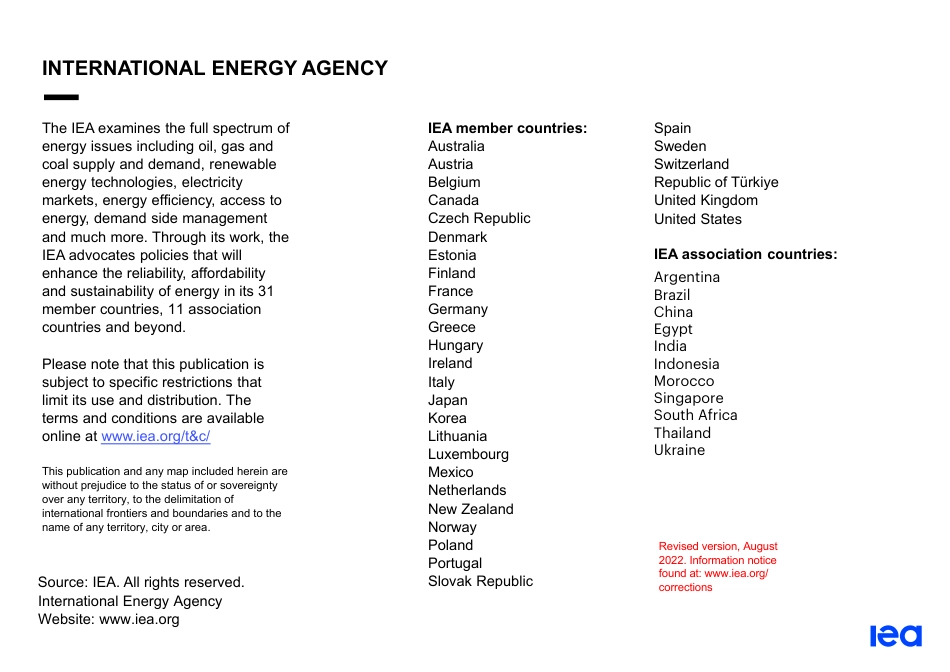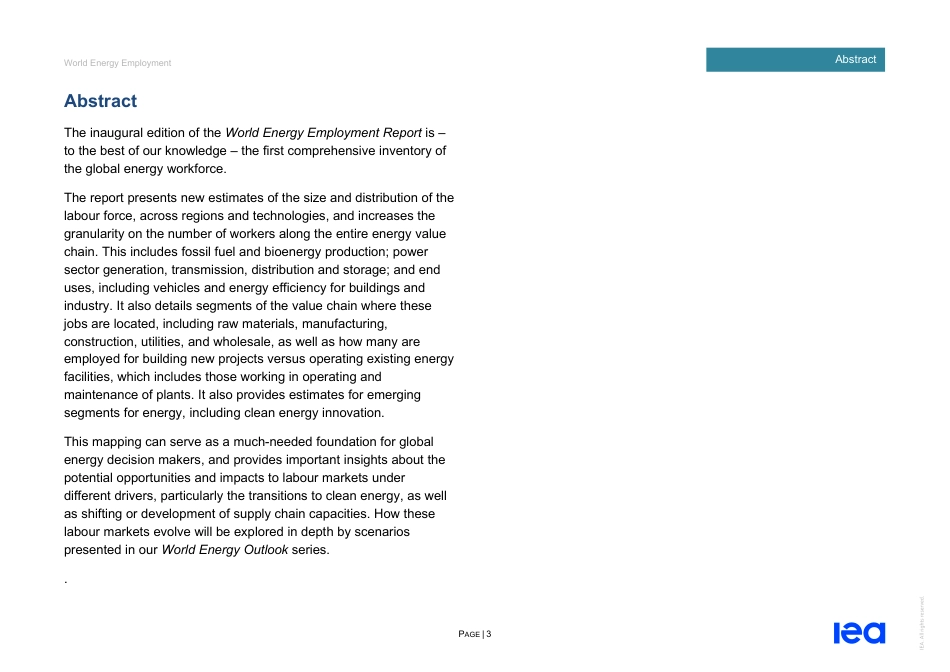World Energy EmploymentThe IEA examines the full spectrum of energy issues including oil, gas and coal supply and demand, renewable energy technologies, electricity markets, energy efficiency, access to energy, demand side management and much more. Through its work, the IEA advocates policies that will enhance the reliability, affordability and sustainability of energy in its 31 member countries, 11 association countries and beyond. Please note that this publication is subject to specific restrictions that limit its use and distribution. The terms and conditions are available online at www.iea.org/t&c/ This publication and any map included herein are without prejudice to the status of or sovereignty over any territory, to the delimitation of international frontiers and boundaries and to the name of any territory, city or area.Source: IEA. All rights reserved. International Energy Agency Website: www.iea.org IEA member countries: Australia Austria Belgium Canada Czech Republic Denmark Estonia Finland France Germany Greece Hungary Ireland Italy Japan Korea LithuaniaLuxembourg Mexico Netherlands New Zealand Norway Poland Portugal Slovak Republic INTERNATIONAL ENERGY AGENCY Spain Sweden Switzerland Republic of TürkiyeUnited Kingdom United States IEA association countries: ArgentinaBrazilChinaEgyptIndiaIndonesiaMoroccoSingaporeSouth AfricaThailandUkraineRevised version, August2022. Information noticefound at: www.iea.org/correctionsWorld Energy Employment PAGE | 3 Abstract IEA. All rights reserved. Abstract The inaugural edition of the World Energy Employment Report is – to the best of our knowledge – the first comprehensive inventory of the global energy workforce. The report presents new estimates of the size and distribution of the...



